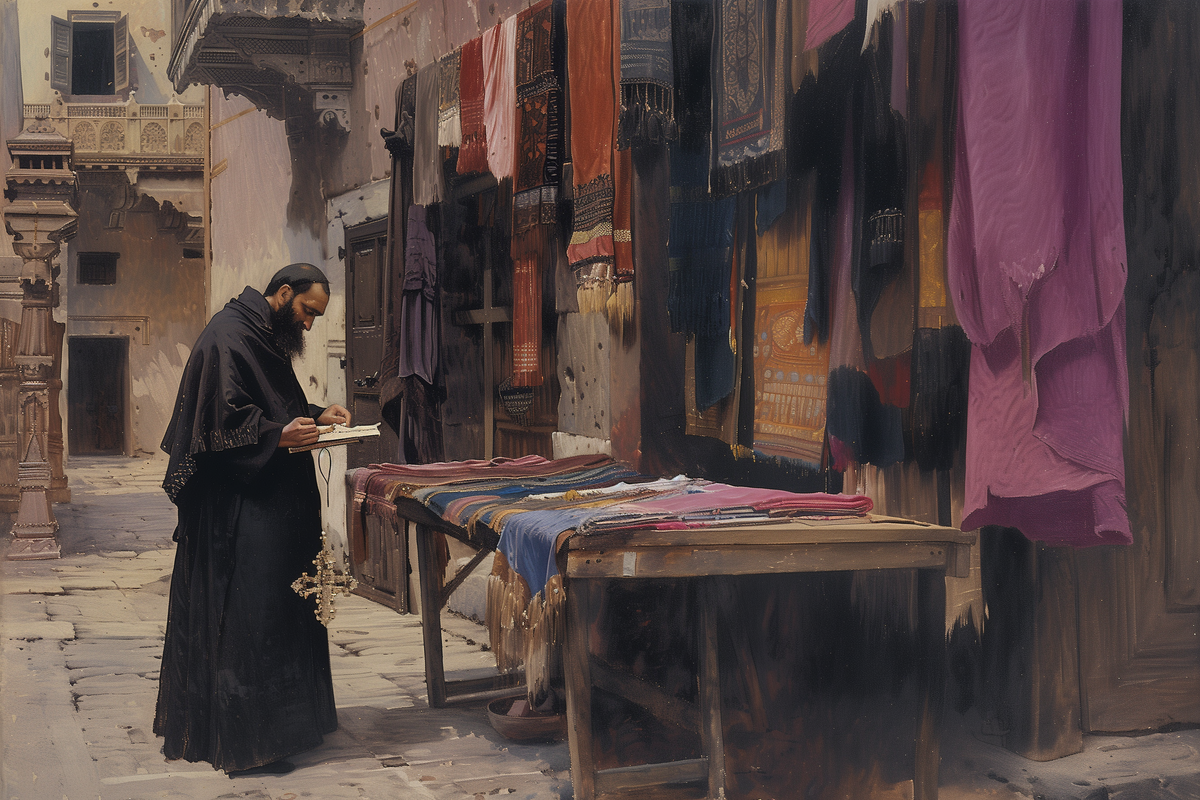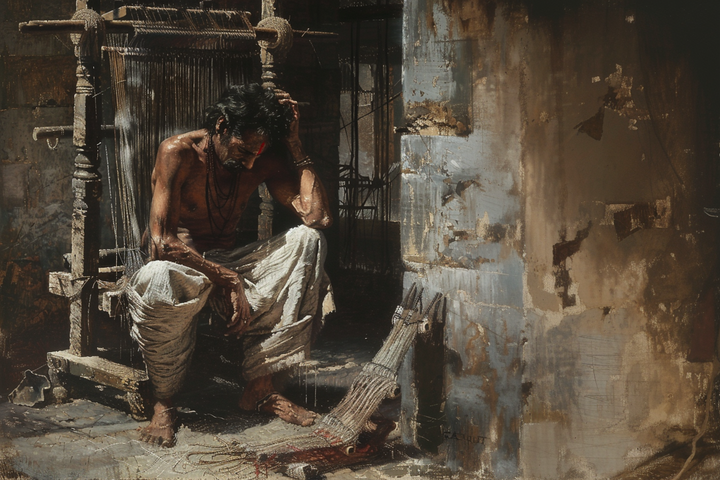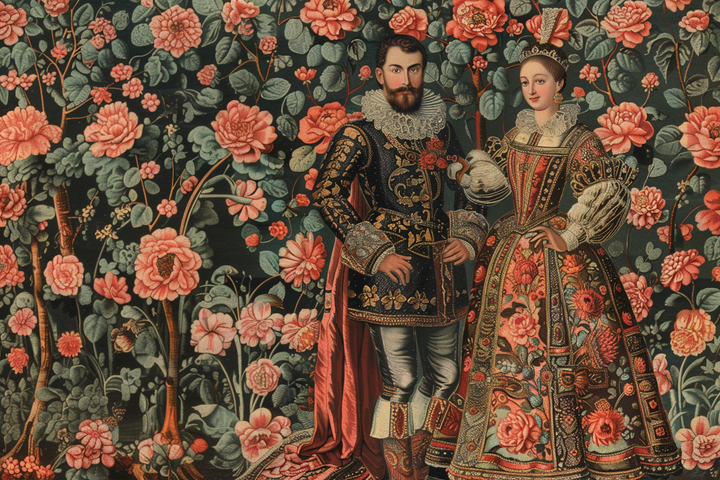How the French stole the secret of making 'heathen' fabric?
Prepare to dive into a world of forbidden fabrics, industrial espionage, and a textile revolution on the brink, as we journey to the heart of the luxurious Indian fabric Chintz has ignited a global fashion revolution.

Now let's see how Europe finally got its hands on the secret of making Chintz. More appropriately, an act of industrial espionage!
In the previous articles, we have already seen the complex production process that made Chintz so luxurious and desirable. We also looked at how the demand for Chintz had a significant influence on trade.
Only after Vasco da Gama reached Calicut in 1498, did the fabric become known in Europe. By 1650, more than a million pieces of chintz were being imported into England per year. A similar quantity was going to France and the Dutch Republic.
While European importers of chintz were profiting immensely from the calico craze, local European textile merchants were far from happy. “Long-established silk, linen, hemp, and wool manufacturers,” Fee writes, “rose up in protest and even rioted against ‘the tawdry, bespotted’ cottons made by ‘Heathens and Pagans’”.

Viciously campaigned against by locals, vilified this fabric as the 'Fabric made by the heathens… Made by heathens and pagans who worship the devil!"One of these vicious pamphleteers was none other than Daniel Defoe, author of the famous book Robinson Crusoe.
Accordingly, in order to protect domestic businesses, chintz was fully banned in France between 1686 and 1759, and partially banned in Britain between 1700 and 1774. There were also various edicts issued in Spain, Venice, Prussia, and the Ottoman Empire pertaining to the import and use of chintz and other Asian textiles.
Even though chintz was outlawed, there were loopholes in the legislation. The Court of Versailles was outside the law and fashionable young courtiers continued wearing chintz.
Indian master craftspeople and dyers had for centuries, kept the secret of how to create these colourful patterns.
In 1734, a French naval officer, who was stationed at Pondicherry, India, sent home letters along with actual samples of chintz fabric during each stage of the process to a chemist friend detailing the dyeing process of cotton chintz. His letters and samples can be seen today in the Muséum national d'Histoire naturelle in Paris.
*Wikipedia
This was the first blow, but the knockout punch came in 1742 from a French Catholic priest, Father Coeurdoux. Some Hindu craftsmen who had converted to Christianity were betrayed by Father Coeurdoux, in an early act of industrial espionage. Although sworn to secrecy, he published a step-by-step guide describing the detailed process of Chintz production!
How the ban on Chintz combined with this secret gave England and European textile mills a leg up to kickstart the industrial revolution is a story we will explore in the next part.
These are our stories in our voices. Let’s Own it...Wear it - Be unapologetic.
This is the third article of a four-part series.
First article: Which Indian fabric once sparked a revolution in trade and fashion?
Second article: How did Chintz influence trade and revolutionise fashion?
Reference materials for the information in this series:
- Riello, G. (n.d.). The Rise of Calico Printing in Europe and the Influence of Asia in the Seventeenth and Eighteenth Centuries. https://www.lse.ac.uk/Economic-History/Assets/Documents/Research/GEHN/GEHNConferences/conf8/PUNERiello.pdf
- Bekhrad, J., n.d. The Floral Fabric That Was Banned. [online] Bbc.com. Available at: https://www.bbc.com/culture/article/20200420-the-cutesy-fabric-that-was-banned
- En.wikipedia.org. n.d. Chintz. [online] Available at: https://en.wikipedia.org/wiki/Chintz
- Fee, S., n.d. THE CLOTH THAT CHANGED THE WORLD: India’S Painted And Printed Cottons. [online] Rom.on.ca. Available at: https://www.rom.on.ca/sites/default/files/imce/pdf/chintz_audioguide_transcript.pdf
- Instagram. n.d. About Chintz. [online] Available at: https://www.instagram.com/p/B7AOhSsJ8Xu
- Yafa, S., 2014. Cotton. New York: Penguin Books.
- Zanten, V., 2020. Chintz 101: A Primer For The Print That’S Back In A Big Way. [online] Vogue. Available at: <https://www.vogue.com/article/chintz-prints-to-know>
- New Internationalist. n.d. Cotton - A History. [online] Available at <https://newint.org/features/2007/04/01/history>
- The Inside Blog. n.d. A Brief History Of Chintz - The Inside Blog. [online] Available at: https://www.theinside.com/blog/a-brief-history-of-chintz/
- Shahani, G. (2008). “A Foreigner by Birth”: The Life of Indian Cloth in the Early Modern English Marketplace. In: Sebek, B., Deng, S. (eds) Global Traffic. Early Modern Cultural Studies. Palgrave Macmillan, New York. https://doi.org/10.1057/9780230611818_10
- The Heritage Lab. n.d. How Indian printed and painted cotton textiles (chintz) changed the world!. [online] Available at: https://www.theheritagelab.in/indian-textile-chintz/




Comments ()